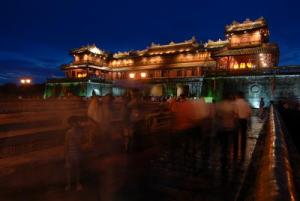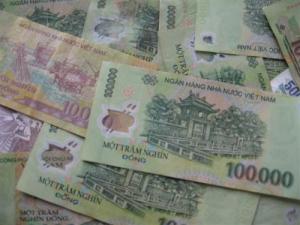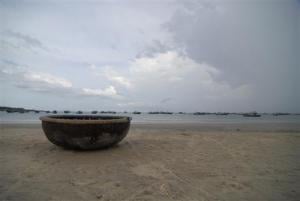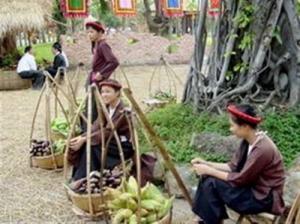Saving Hanoi’s Green Giants
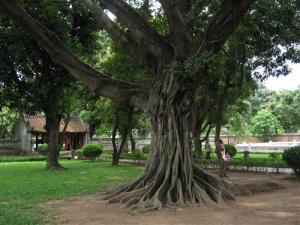
Known capital of Vietnam, a vast territory that is home to over 6 million people, ${bigcity_Hanoi:"Hanoi"} is now deemed as a sprawling urban jungle of the 21st century. As the second largest city in the country with a steadily growing population, urbanization becomes a necessity. However, despite the fast pace of development taking place in the capital, the city demonstrated remarkable efforts to preserve its architectural heritage and all the charming sceneries it takes pride on. Apart from over 600 pagodas and temples seated in the city, Hanoi also cradles the country’s most important cultural sites and Vietnam’s most popular lakes.
Always a priority destination, the charm and beauty of the city is said to be owed from its beautiful sceneries and rich history. Not popularly acknowledged, but the green giant trees all over Hanoi is the invisible hand that stirs people’s fascination over the place and for the past centuries, have allured both residents and visitors with its subtle yet significant presence.
The tree-lined boulevards and the old mighty trees confined in the courtyards of pagodas, villas and narrow alleys are not just appreciated for their appeal. How trees are known to absorb dust, cleanse the air and muffle some of the incessant noise are among their most essential qualities. Some of these trees, in fact, are given so much regard and because of their significance, are protected and constantly looked after for. Trees inside the grounds of pagodas and temples are worshipped and praised in songs as they are deemed guardians.
Some of these trees have lived longer than the lifetime of certain citizens and for them, having watched these trees grow makes them feel deeply connected to it. For the shade they have provided over the years, the dry leaves it lends to those who needs to fire up their stoves, and for holding witness to the most unforgettable and important moments of their lives, these trees are looked as old friends to them.
Perhaps the present visage of Hanoi is greatly influenced by the French occupation. Before they came, the city was a large forest surrounding Thang Long Citadel and the tiny villages around. The inevitable growth of the city has somehow pushed aside the greener parts of the land. But the French colonial administration planted trees along its boulevards and defined the future landscape and character of Hanoi.
Some of these trees have been around for so long and as they lived through the generations, they took with them meaningful histories. One of the trees at Thang Long Imperial Citadel is known to be where a provincial chief by the name of Hoang Dieu had hung himself. The muom (bachang mango) trees in Quan Thanh Temple are believed to have been planted in 1680 during the reign of Le Hy Tong (1676-1704). As they continue to exist at present, they hold in them important pieces of Vietnam’s past. Other trees possess equally great meanings. The loc vung trees encompassing Hoan Kiem Lake are deemed by people as a symbol of good fortune and prosperity. Growing such tree within your yard or holding an article made from the loc vung inside the house is believed to be an assurance and protection from misfortune.
The Vietnam Union of Science and Technology Associations’ Centre for Education and Communication of Environment have designed a project aimed to record the origin as well as determine the economic and cultural value of the trees involved in the study. The map of Hanoi’s “ancient trees”, which will hold these valuable information is said to be underway and hopefully, the map will be completed by early 2010. Once concluded, it will be made available to the public as well as to tourists.
The rise of flower gardens and botanical gardens within Hanoi is a symbol of how the city and its people exhibits close affinity with the city’s trees. At present, there are approximately 100 species of trees that stands in the city. Many of them are believed to be over a hundred years old. However, some of them are feared to be on the verge of extinction.
The capital city is growing fast, putting the fate of these trees at stake. The vested interests of a few developers have caused the growing disregard for nature and cutting down even the rarest of trees have placed the green areas in clear danger. Increased efforts to protect them are strongly urged. Apart from that, inclement weather and storms, air pollution and groundwater contamination all have pressed added threats to the health of Hanoi’s green giants.
Indeed, greater regard should be imparted to these rare trees. How it had lived through several generations makes them more priceless than many of the treasures Vietnam holds. Trees may be replanted when cut, yet, the history it carries is difficult to re-live. Moreover, it would take a significant amount of time before a new tree can reclaim the same beauty of the one it had replaced. The charm, the history and the pride of contributing to Hanoi’s unmistakable appeal, these green giants are not only physical, spiritual and cultural assets of the capital city, but of the whole country itself.





